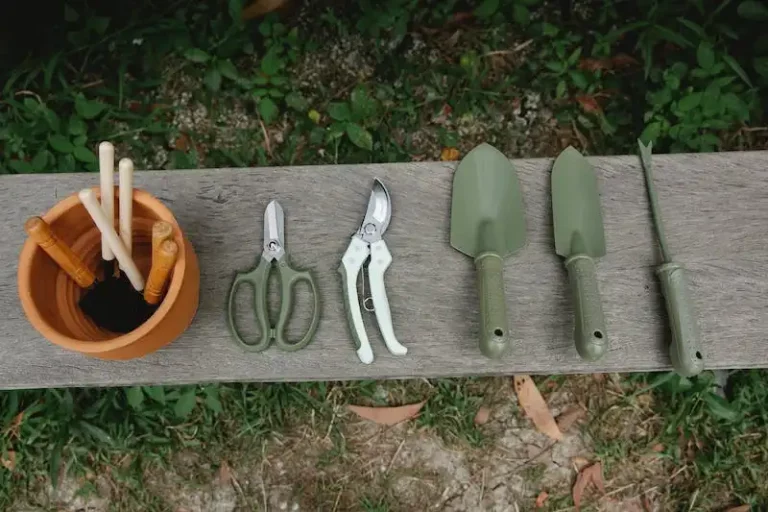Apples are a beloved fruit that can be enjoyed in various dishes and desserts. Whether you’re using them for cooking or simply snacking on them fresh, it’s important to know when to pick and how to store your apples to extend their shelf life and keep them at peak flavor.
Picking apples at the right time is crucial for getting the best flavor and texture. The timing of picking varies depending on the variety of apple and the ripeness signs to look for. Typically, mid-season apples are ready to be picked from mid-August to mid-October. To determine if an apple is ripe, look at its color and feel its firmness. Ripe apples will have vibrant colors and should be slightly firm to the touch.
When picking apples, it’s important to handle them with care to avoid bruising or damaging them. Gently twist and lift apples upwards, avoiding any pulling or tugging motion. If you notice any signs of rot or damage, sort those apples out and do not store them with the rest of your batch.
Once you have picked your apples, it’s time to store them properly. Apples can be stored in a cool place, such as a basement or cellar, where the temperature can be maintained between 30-40 degrees Fahrenheit. It’s important to keep the apples away from frost and extreme temperature fluctuations, as this can affect their ripening process and flavor.
There are various methods for storing apples, depending on their ripeness and flavor. For pre-ripe apples, store them in the refrigerator to slow down the ripening process. This can help them stay fresh for a longer period. For fully ripened apples, they can be stored at room temperature for a few days. However, keep in mind that apples stored at room temperature will ripen faster and should be eaten within a week.
In addition to temperature, the surface on which apples are stored can also impact their shelf life. Avoid storing apples on wooden or metal surfaces, as these can speed up the ripening process and cause the apples to deteriorate faster. Instead, opt for storing them on a clean surface, such as a countertop or shelf.
By following these tips and tricks, you can ensure that your picked apples stay juicy, flavorful, and fresh for a longer period of time. So next time you go apple picking, make sure to know the ripeness signs and apply proper storing methods to enjoy your apples throughout the year!
When to pick your apples
Picking the apples at the right time is crucial for their flavor and freshness. The timing of the harvest depends on the variety of the apples, as well as the local weather and growing conditions.
Early season apples, such as “August”, are usually ready to be picked in mid-August. These apples have a crisp texture and a slightly tart flavor. They are suitable for fresh consumption and can be stored for a few weeks.
Mid-season apples are usually harvested in late August to early September. These apples have a balance of sweetness and tartness. Their color is a good indicator of their ripeness, as they turn from green to a more yellow or red hue. They can be stored for several months in a cool place.
Late season apples, such as “Western”, are typically harvested in late September to early October. These apples have a high sugar content and are suitable for long-term storage. They are best picked when the starch has converted to sugar, as indicated by a sweet taste and a more mature color.
To pick apples, gently grasp the fruit and twist it upwards. If the apple comes off easily from the stem with a slight upward motion, it is ready to be harvested. Avoid picking apples that are pre-ripe, mushy, or have rotten spots on the surface. These apples may not ripen properly or have a shorter shelf life.
When picking apples, remember that each variety has its own ripening schedule. Some apples, like “Ag” and “Juicy”, ripen earlier in the season while others, like “Commercial” and “Thaw”, ripen later. Research the specific variety you are growing to determine the best timing for harvesting.
Once you’ve picked your apples, handle them with care to prevent bruising. Sort the apples based on their size and ripeness, and store them in a cool, dark place with good airflow. Avoid keeping apples with strong-smelling fruits or vegetables, as they can affect the flavor of the apples.
To measure the ripeness of an apple, gently press your thumb near the stem. If the flesh gives slightly and feels juicy, the apple is ripe. If the flesh feels firm and there is little to no give, the apple is not yet fully ripe.
By picking your apples at the right time and storing them properly, you can enjoy fresh and flavorful apples throughout the season.
Typical ripening by variety
Apples come in a variety of types, each with its own unique characteristics and ripening schedule. Knowing when different apple varieties are ready for harvest is key to picking them at their peak ripeness and flavor.
Typically, apples can be categorized into early season, mid-season, and late season varieties. Here are some examples:
| Variety | Ripening Season | Characteristics |
|---|---|---|
| Zestar! | Mid-August | Crunchy, juicy apples with a hint of tartness. Great for fresh eating. |
| Jonagold | October | A mix of the Jonathon and Golden Delicious varieties, resulting in a bright red color with a sweet and tangy flavor. Excellent for both fresh consumption and baking. |
| Braeburn | Late September to October | A versatile apple with a firm texture, balancing sweetness and slight tartness. Perfect for snacking, baking, or making sauces. |
| Honeycrisp | Mid-September to October | A crowd favorite for its explosive crunch, sweet flavor, and excellent juice content. Ideal for eating fresh or adding a crisp texture to salads. |
When picking apples, assess their ripeness based on several signs. Look for rich coloration, as most apple varieties change in color as they ripen. Check the firmness by gently pressing the apple – it should yield but not be mushy. Pay attention to the aroma – a ripe apple will have a fragrant smell. Additionally, taste an apple to determine its ripeness and flavor.
Once you harvest apples, it is important to store them correctly to maintain their quality and extend their shelf life. Place your apples in a cool, dark location with good ventilation, such as a cellar or a refrigerator. Avoid storing apples alongside vegetables or other fruits that emit ethylene gas, as it can cause ripening and potentially lead to faster decay.
By knowing the typical ripening schedule of apple varieties and using these tips and tricks, you can enjoy delicious, ripe apples throughout the year.
Early season varieties mid-August to early September
There are several early season apple varieties that are ready for picking and storing from mid-August to early September. In this section, we will discuss some tips and tricks for picking and storing these varieties:
- Zestar: This variety is known for its crisp texture and sweet-tart flavor. It is usually ready for harvest in late August and can be stored for up to a month.
- Gala: Gala apples are typically ready for picking in late August. They have a mild, sweet taste and are great for eating fresh or for cooking.
- McIntosh: McIntosh apples are a classic early season variety. They have a tart flavor and a red and green skin color. They are typically ready for harvest in early September.
- Early Gold: This variety is ready for picking in mid-August. They have a sweet and tangy flavor and are great for snacking.
When picking early season apple varieties, it’s important to know that they may not be fully ripe when harvested. Look for apples that are firm and have a good color. To determine if an apple is ripe, gently twist it on the tree. If it comes off easily, it is ready to be picked.
After picking, it’s essential to store the apples properly to extend their shelf life. Start by removing any apples that are rotten or have visible damage. Sort the apples by size, placing the larger ones on the bottom and the smaller ones on top.
Store the apples in a cool, dry place, such as a root cellar or a refrigerator. Make sure they are not touching each other, as this can cause them to spoil faster. You can also store them in airtight containers or plastic bags with a few holes punched in them.
If you want to store the apples for an extended period, you can also consider freezing or processing them. Freezing apples is a great way to preserve their flavor and texture. To freeze apples, simply wash, peel, and slice them before placing them in airtight containers or plastic bags. Label the containers with the date and variety of apple.
Remember to thaw the frozen apples in the refrigerator before using them. They can be used for baking, making applesauce, or enjoying as a healthy snack.
By following these helpful tips and tricks, you can enjoy the early season apple varieties for an extended period and make the most out of your apple harvest.



